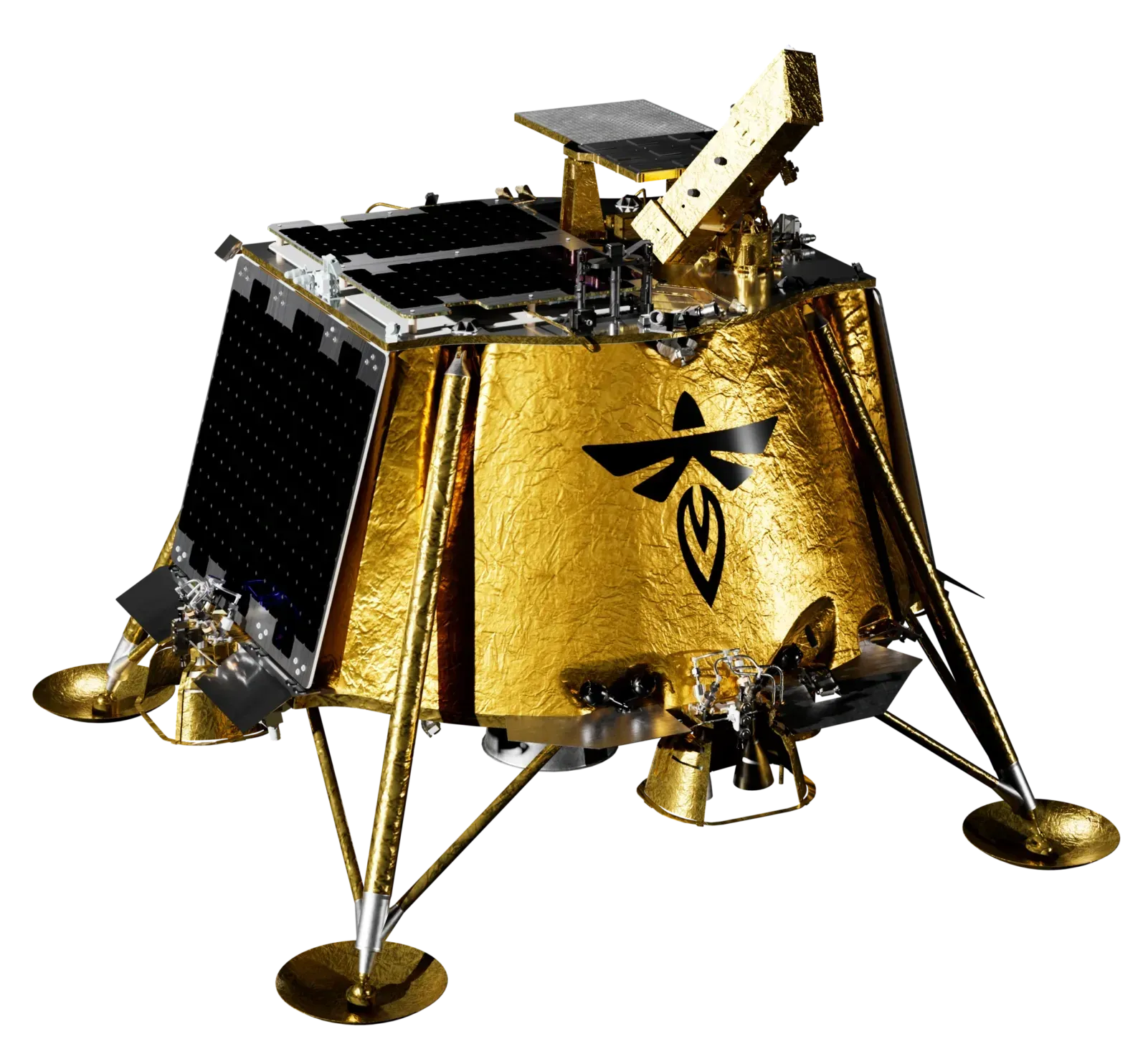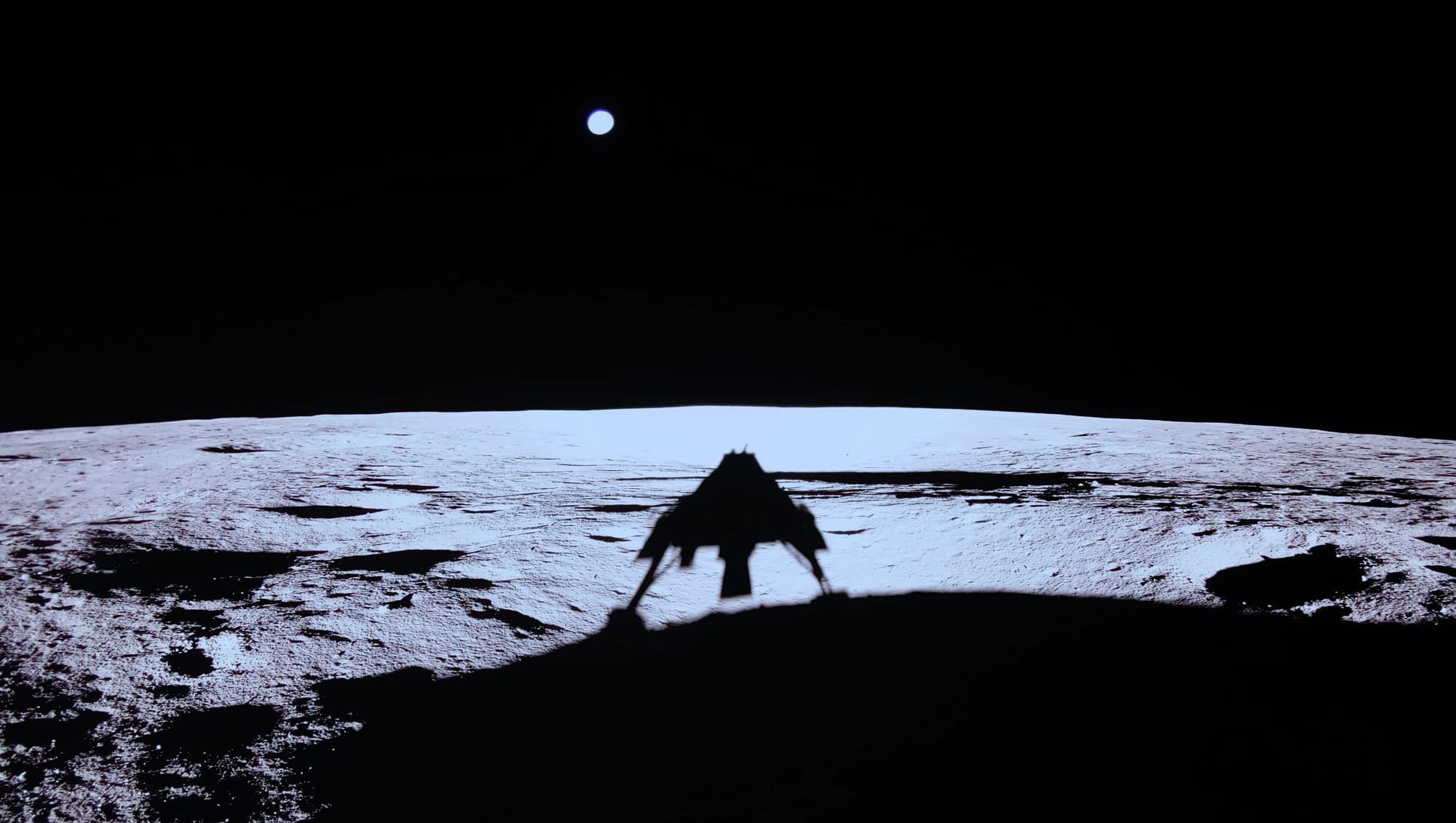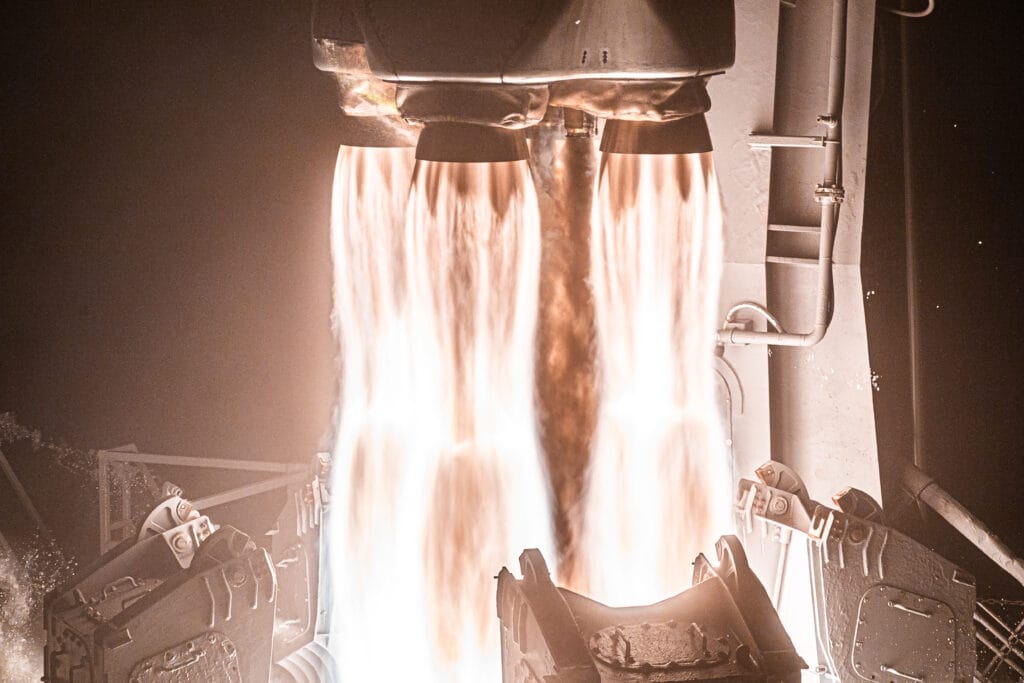Table of Contents
Firefly Aerospace's first Blue Ghost lunar landing mission, named 'Ghost Riders in the Sky', began its journey to the Moon early on January 15th, entering lunar orbit just over two weeks ago. Today, Blue Ghost has successfully touched down on the Moon!
Descent toward the lunar surface began at 08:19 am Universal Coordinated Time when the GO command was given to Blue Ghost, the descent burn then began at 08:22. Over the next nine minutes all of the spacecraft's engines fired until the main engine was shut down to fine tune the landing velocity. Under the power of eight smaller engines, Blue Ghost touched down on the lunar surface at 08:34 am.
According to Firefly, Blue Ghost completed its landing within 100 meters of its target in Mare Crisium, landing near a volcanic feature called Mons Latreille. With the landing, Firefly has also become the first company part of NASA’s Commercial Lunar Payload Services initiative to achieve a wholly successful lunar mission.
Now on the Moon's surface, Blue Ghost will spend the next lunar day, fourteen Earth days, running its various scientific payloads. Some of these payloads include lunar subsurface drilling, sample collection, X-ray imaging, and dust mitigation experiments. Several experiments already began collecting data en-route to the Moon, gathering around twenty-seven gigabytes of data, with Firefly Aerospace's Chief Technology Officer Shear Ferring stating:
“With the hardest part behind us, Firefly looks forward to completing more than 14 days of surface operations, again raising the bar for commercial cislunar capabilities,” – “Just through transit to the Moon, Firefly’s mission has already delivered the most science data to date for the NASA Commercial Lunar Payload Services initiative."
At the end of the current lunar day, Firefly is hoping to observe a lunar sunset to provide data on how lunar dust levitates due to solar influences and creates a lunar horizon glow. After the sunset, Blue Ghost will operate for a few more hours before succumbing to the extreme cold.
With the success of Blue Ghost's first mission, two more capable missions are set for 2026 and 2028 respectively. Regarding future missions to the Moon, Firefly Aerospace's Chief Executive Officer, Jason Kim added:
“Firefly is literally and figuratively over the Moon,” – “Our Blue Ghost lunar lander now has a permanent home on the lunar surface with 10 NASA payloads and a plaque with every Firefly employee’s name. This bold, unstoppable team has proven we’re well equipped to deliver reliable, affordable access to the Moon, and we won’t stop there. With annual lunar missions, Firefly is paving the way for a lasting lunar presence that will help unlock access to the rest of the solar system for our nation, our partners, and the world.”
What payloads are onboard?
For Blue Ghost's first mission, the lander is carrying ten payloads. Those payloads are:
- Lunar Instrumentation for Subsurface Thermal Exploration with Rapidity (LISTER), which aims to characterize heat flow from the interior of the Moon by measuring the thermal gradient and conductivity of the lunar subsurface.
- Lunar PlanetVac (LPV), which is aiming to demonstrate pneumatic sample collection of lunar regolith by collecting and sorting regolith within its sample collection chamber.
- Next Generation Lunar Retroreflector (NGLR), which hopes to support the determination of the distance between Earth and the Moon by reflecting very short laser pulses from Earth-based Lunar Laser Ranging Observatories and measuring the laser pulse transit time to the Moon and back
- Regolith Adherence Characterization (RAC), which aims to determine how lunar regolith sticks to a range of materials exposed to the Moon’s environment throughout the lunar day.
- Radiation Tolerant Computer (RadPC), which is aiming to demonstrate a computer that can recover from faults caused by ionizing radiation.
- Electrodynamic Dust Shield (EDS), which hopes to demonstrate an active dust mitigation technology that uses electric fields to move dust from surfaces and to prevent dust accumulation on surfaces.
- Lunar Environment heliospheric X-ray Imager (LEXI), which is aiming to capture a series of X-ray images to study the interaction of solar wind and the Earth’s magnetic field that drives geomagnetic disturbances and storms.
- Lunar Magnetotelluric Sounder (LMS), aims to characterize the structure and composition of the Moon’s mantle by measuring electric and magnetic fields.
- Lunar GNSS Receiver Experiment (LuGRE), is hoping to receive and track signals from the GPS and Galileo navigation satellite constellations during the Earth-to-Moon transit and throughout a full lunar day on the Moon’s surface.
- Stereo CAmera for Lunar Plume-Surface Studies (SCALPSS), which is aiming to use stereo imaging photogrammetry to capture the impact of rocket plume on lunar regolith as the Blue Ghost lander descends on the Moon’s surface.
What is Blue Ghost?
Blue Ghost is Firefly Aerospace's privately developed lunar lander, capable of delivering 150 kilograms to the lunar surface or 2,700 kilograms into the Moon's orbit. The lander stands at just 2 meters tall while being 3.5 meters wide.
Firefly is hoping to perform yearly missions with Blue Ghost with launches across a variety of rockets, including its own in-development medium-lift launch vehicle. In arguing why customers, like NASA, should choose Blue Ghost, the company says:
"Firefly’s Blue Ghost lander is designed and built to be easily adapted to serve each customer’s unique cislunar needs. Our vertically integrated approach with shared components across our vehicles further enables scaled efficiencies, quality assurance, and lower costs that we pass on to our customers."





